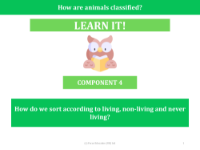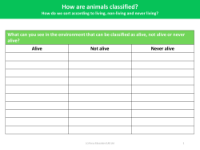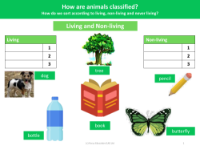How do we sort according to live, non-living and never living? - Teacher notes

Science Resource Description
In an educational setting, teachers guide children through the process of understanding the differences between living, non-living, and never living things within their environment. Initially, the children are encouraged to engage with their surroundings and make a list of items they identify as alive or not alive. This task helps them to actively think about the characteristics that define living organisms, such as growth, reproduction, and the ability to respond to stimuli.
Following the creation of their lists, the discussion moves towards the non-living items. The teacher prompts the children to consider whether any of these items may have once been part of something living, such as pencils that are manufactured from wood, which was once part of a living tree. This leads to a deeper understanding of how materials can change over time from living to non-living states. Finally, the children are tasked with categorising objects that were never alive, such as rocks, water, and plastic. This exercise not only teaches biological classification but also encourages critical thinking and observation skills as children learn to sort and categorise items based on their life status.



